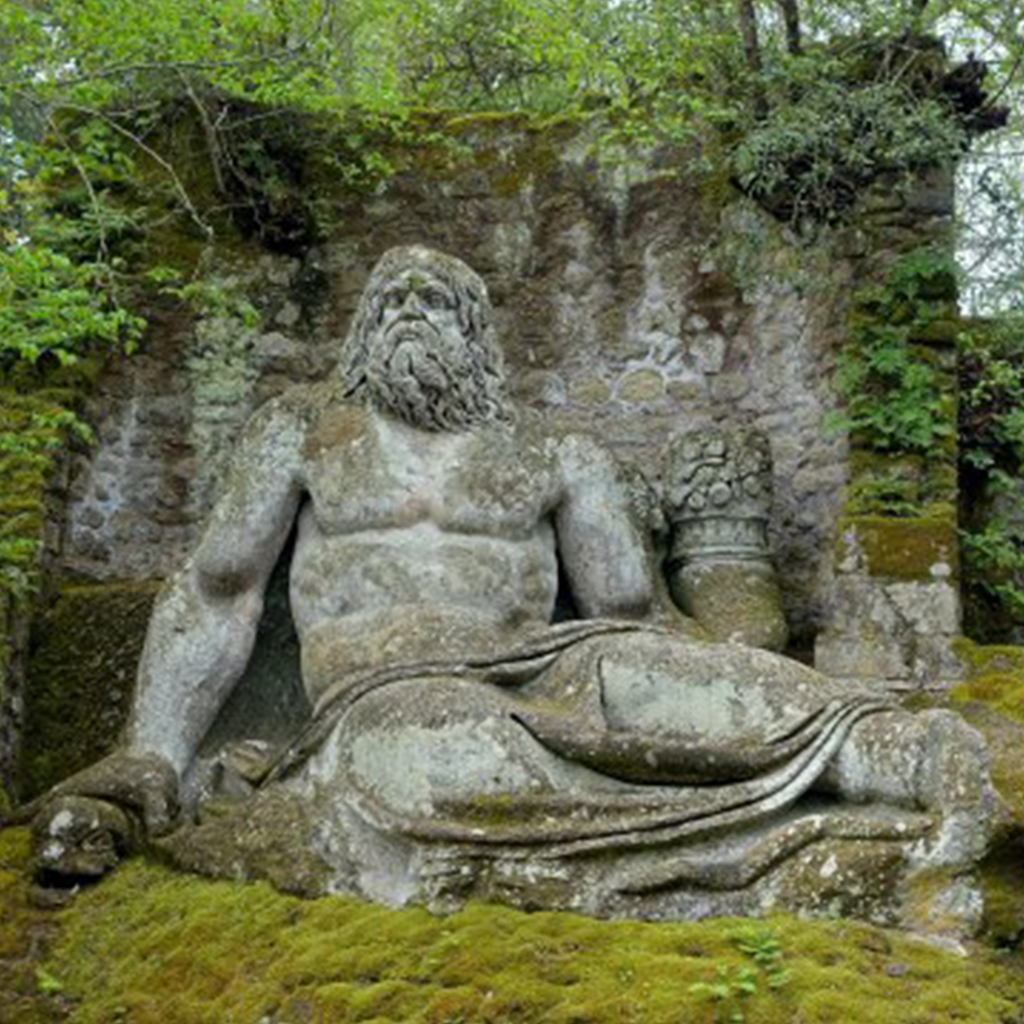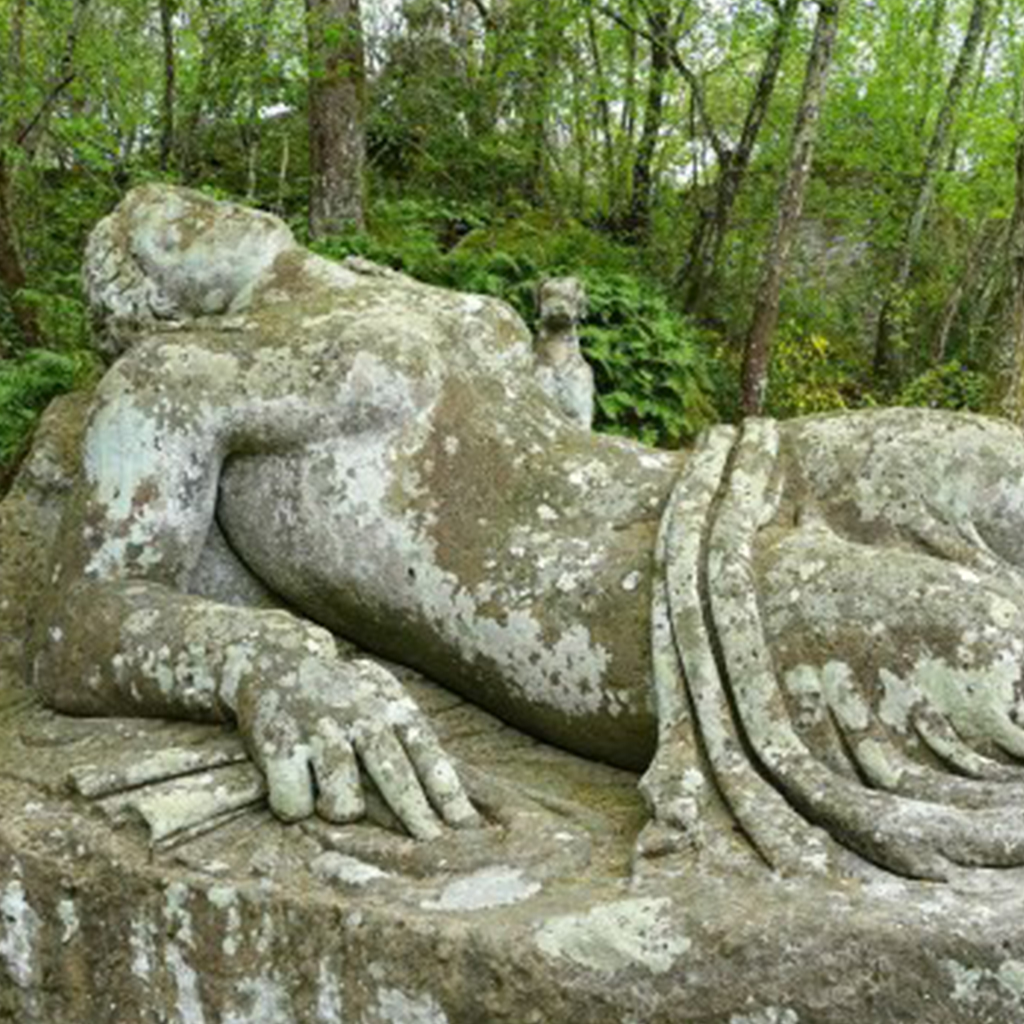If you’re planning a visit to Italy, chances are Rome is the number one city on your travel bucket list. But, hidden a mere 60 miles from this bustling metropolis, lies an enchanting spot that remains undiscovered by most tourists: The Park of Monsters, or as some may call it, Parco dei Monstri.

Back in 1552, an exceptional park came into being, holding the distinction of being the only one of its kind worldwide. Unfortunately, throughout the 19th century and a significant portion of the 20th century, the garden that housed these remarkable “monsters” was neglected and left unattended. However, during the 1970s, a comprehensive scheme for reviving the garden was initiated, ultimately turning Bomarzo into a renowned hotspot for tourists.

In 16th century Italy, it was customary for wealthy nobles to commemorate their opulence through religious art. Nevertheless, Pier Francesco Orsini possessed an extraordinary ambition for recognition. He longed to mesmerize guests and astonish them with his extraordinary and surprising creatures, striving to cultivate a distinct sense of marvel.

Nestled in the province of Viterbo, Italy, lies a charming getaway known as Bomarzo. This idyllic retreat is located in the scenic lower Tiber valley, just a short 68km away from the busy streets of Rome. What makes Bomarzo truly special is its fascinating history, rooted in the magnificent Orsini family castle and the lush forest that enveloped it. Acting as a peaceful oasis during a time of societal chaos and tension, Bomarzo provided solace and tranquility to its dwellers.

Get ready to be amazed by a mesmerizing collection of more than 25 captivating artworks, each featuring their own mysterious mythological figures and chilling visual appeal. Brace yourself for the awe-inspiring sight of massive enigmatic sculptures, a deliberately distorted house similar to the iconic Tower of Pisa, and a variety of peculiar creatures that will take you on a thrilling and unique adventure.

From the late 1800s to the 1990s, the garden, once teeming with life, was sadly forgotten and left to decay. However, there was a glimmer of hope in the 1970s when dedicated individuals initiated a careful restoration project to breathe new life into the neglected plot. Today, Bomarzo has undergone a remarkable transformation and has earned a well-deserved reputation as a top tourist destination, captivating people from all corners of the globe.

The garden showcases a collection of cleverly arranged sculptures, strategically placed to pique the curiosity of daring explorers. As visitors stroll along the winding paths, they are captivated by the mysterious artwork tucked away in secret nooks, igniting their imagination and leaving them utterly fascinated. Some sculptures are meticulously carved onto massive rocks, often catching unsuspecting onlookers off guard with their unexpected appearance.

Pier Francesco Orsini, more commonly known by his nickname Vicino, was an esteemed warrior hailing from the Italian Renaissance era. He led a life dedicated to cherishing and preserving the cherished memories of his dearly beloved spouse.

After the passing of his treasured spouse, he found himself overcome with a profound sense of sorrow and set out on an audacious quest to create a wondrous garden. Teaming up with Pirro Lugorio, a renowned architect of the time, he poured every ounce of his being into this venture. The garden now stands as a testament to his dedication, featuring an astounding collection of sculptures that include awe-inspiring creatures like the esteemed deities Pegasus, Poseidon, and Proteus.

The arrangement of these sculpted legendary creatures seems to lack a consistent theme derived from ancient folklore or a suitable environment that matches their present surroundings.





Perhaps it was the profound grief resulting from the untimely passing of his beloved spouse that served as a catalyst for Vicino’s decision to construct this extraordinary park. Nevertheless, despite numerous years of diligent examination, the elusive enigma shrouding its origin continues to confound researchers, remaining an unresolved riddle.




